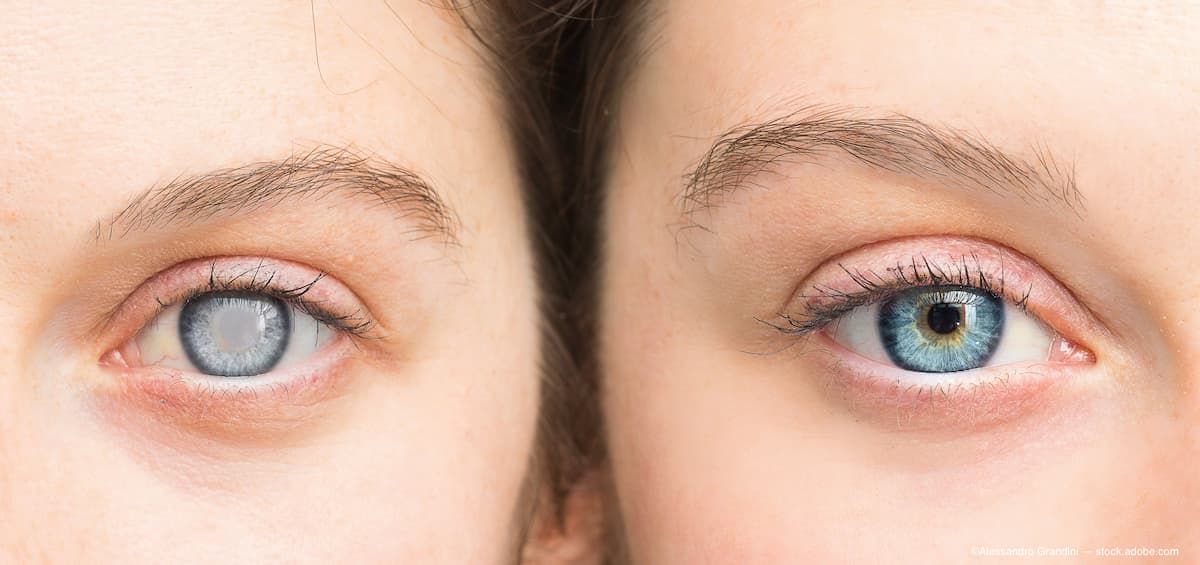Article
Insights on surgical management for pediatric keratoconus
Author(s):
Sara Anastas, MD, discusses criteria for surgical intervention methods with either corneal crosslinking (CXL) or penetrating keratoplasty in pediatric patients.

Results from a retrospective analysis of topographic data offer guidance for deciding on the management of children with clinically suspected keratoconus.
The research, which was presented by Sara Anastas, MD, at the ASCRS-ASOA annual meeting, being held May 3-7 at the Convention Center in San Diego, CA, showed that more than 40% of pediatric cases referred for topographic evaluation because of suspicious topography went on to require surgical intervention with either corneal crosslinking (CXL) or penetrating keratoplasty (PKP).
Eyes that went on to a transplant procedure had significantly steeper and thinner corneas than their counterparts that had CXL or no intervention, reported Dr. Anastas, resident, Department of Ophthalmology, New York Medical College, Valhalla, NY.
Dr. Anastas conducted the study with Gerald Zaidman, MD, professor of Clinical Ophthalmology, and director, Cornea and Refractive Surgery Service, New York Medical College, Valhalla, NY. She noted that keratoconus in the pediatric population is an aggressive disorder that has been shown to progress more rapidly than in adults and result in a higher rate of transplantations.
“Corneal crosslinking can provide stability and delay transplantation in children with keratoconus. Thus, early identification of keratoconus in the pediatric population is vital to managing follow-up and monitoring for progression,” said Dr. Anastas. “Our study suggests that children who present with a mean anterior keratometry >54 D and thinnest pachymetry <416 µm may be at higher risk for keratoconus progression and warrant early consideration for CXL to delay or prevent the need for a graft procedure. Other children, however, can be monitored over time for possible progression.”
In order to utilize corneal topography to determine risk for progression to PKP or CXL, Dr. Anastas and Dr. Zaidman analyzed data on anterior mean keratometry (AKm), posterior mean keratometry (PKm), and thinnest pachymetry (TP) from 31 eyes of 17 patients who were referred for evaluation for possible keratoconus. The patients were seen between 2008 and 2016 and were only included if they were ≤18 years old and had repeat topography with clinical follow-up of at least two years. Eyes that progressed to PKP sooner than six months were excluded.
Of the 31 eyes included in the study, seven eyes went on to PKP at a mean of 3.5 years after initial evaluation, six eyes underwent CXL, and 18 eyes were stable and had no intervention
The corneal measurements were obtained with a Scheimpflug device (Pentacam, Oculus), and the three variables were analyzed using one-way ANOVA and TUKEY HSD post-hoc analysis.
The results showed that the group of eyes that underwent PKP differed significantly from the other two groups in all three initial referral topography parameters. At presentation in the group that had PKP, mean AKm was 54.1 D, mean PKm was -8.14 D, and mean TP was 416.7 µm. There were no significant differences in any of the three corneal parameters comparing eyes that had CXL and the stable group, although the eyes that had CXL progressed during follow-up.
Representative cases
Dr. Anastas also presented a brief case history for an eye within each of the three study groups that illustrated differences in the initial presentation and the course of keratoconus during follow-up. The initial referral topography for a 16-year-old patient who went on to PKP showed AKm of 50.4 D, PKm of -7.6 D, and TP of 467 µm. The patient’s corrected visual acuity (VA) was 20/50. The patient received rigid gas permeable contact lenses and did well, but after eight years, AKm had progressed by 12.4 D, vision had deteriorated to 20/200 without correction, and the patient was no longer able to tolerate the contact lenses.
Another 16-year-old patient had initial topography readings of 44.6 D for AKm, -6.8 D for PKm, and 529 µm for TP with an uncorrected VA of 20/30+. After two years, AKm was 47.7 D, PKm was -7.3 D, TP was 500 µm, and uncorrected VA was 20/40. The patient was treated with CXL because of the progression.
Compared to the latter patient, a 14-year-old who presented with a thicker cornea (582 µm), but with nearly identical measurements for AKm, PKm, and uncorrected VA remained stable during follow-up.





